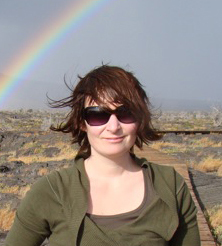Brightest Cluster Galaxies
Contact

| Alexie Leauthaud |
|---|
| Kavli Institute for the Physics and Mathematics of the Universe |
| alexie.leauthaud@ipmu.jp |
Summary
Spectra of brightest cluster galaxies (BCGs) in the 220-square-degree stripe 82 survey area
Finding Targets
An object whose ANCILLARY_TARGET2 value includes one or more of the bitmasks in the following table was targeted for spectroscopy as part of this ancillary target program. See SDSS bitmasks to learn how to use these values to identify objects in this ancillary target program.
| Program (bit name) | Bit number | Target Description | Number of Fibers | Number of Unique Primary Objects |
|---|---|---|---|---|
| STRIPE82BCG | 6 | Brightest cluster galaxy in stripe 82 survey area | 1,407 | 1,302 |
Description
Over 3,000 groups and clusters have been identified photometrically in SDSS Stripe 82 (Geach, Murphy, & Brower 2011; Murphy, Geach, & Brower 2012). These clusters were identified from ugriz photometry generated from the coaddition of Stripe 82 images (Annis et al. 2011); this co-added image is ~ 2 mag deeper than imaging in the rest of the BOSS footprint. These clusters have photometric redshifts in the range 0 < z < 0.6 (median z = 0.32), and are expected to reside in dark matter halos with masses in excess of 2.5 x 1013 solar mass.
Each cluster is assigned a brightest cluster galaxy (BCG), which is simply defined as the brightest member associated with the cluster detection. To confirm the cluster redshifts, we obtained spectra of the likely BCGs with magnitudes 17 < ifib2 < 21.7 and colors that vary with redshift according to the cluster detection algorithm (Murphy, Geach, & Brower 2012). A sample of 1,505 BCGs was identified; the BOSS spectrograph obtained spectra of 1,345 of these galaxies. These 1,345 galaxies had not been previously included in the SDSS Data Release 7 main galaxy sample, or in the 2SLAQ or WiggleZ samples.
This new sample of spectroscopically confirmed galaxy clusters will enable a wide variety of science, including the weak lensing of groups and clusters, the link between star formation and AGN activity in BCGs, and the LRG population of dark matter halos.
REFERENCES
Annis, J.A., et al. 2011, arXiv:1111.6619
Geach, J. E., Murphy, D. N. A., & Bower, R. G. 2011, MNRAS, 413, 3059, doi:10.1111/j.1365-2966.2011.18380.x
Murphy, D. N. A., Geach, J. E., & Bower, R. G. 2012, MNRAS, 420, 1861, doi:10.1111/j.1365-2966.2011.19782.x



